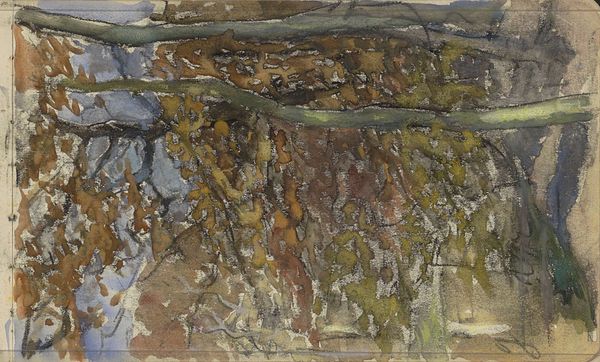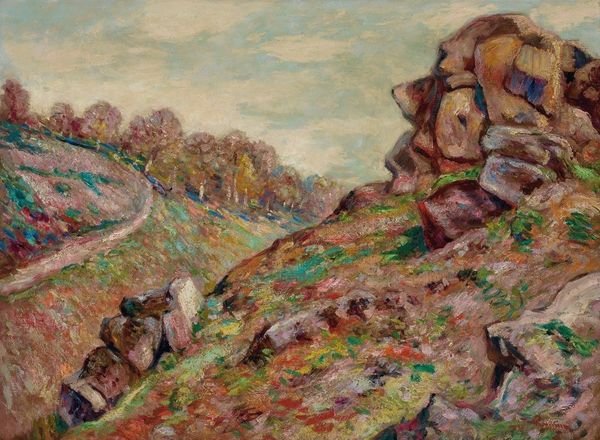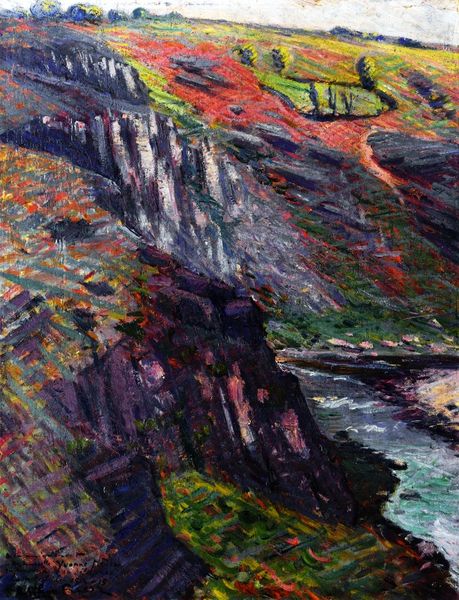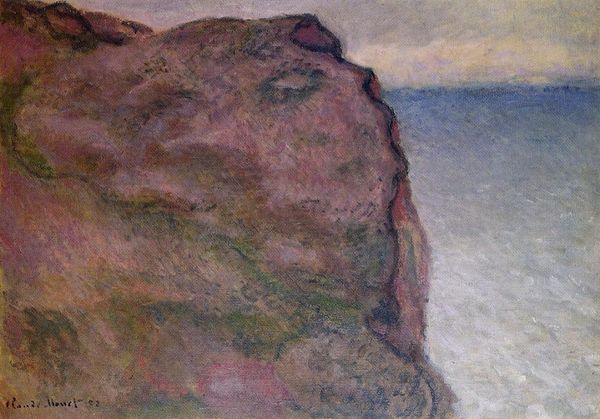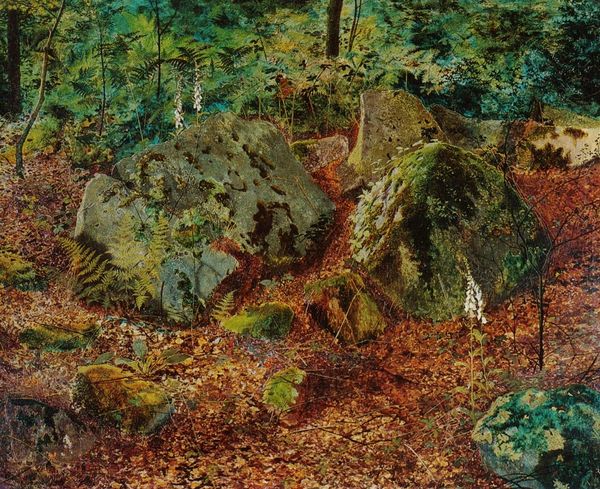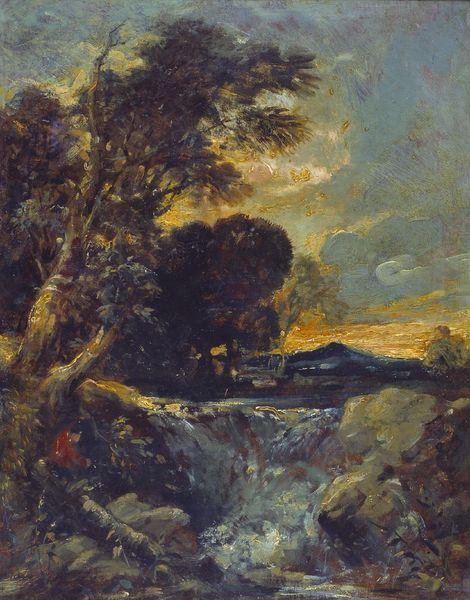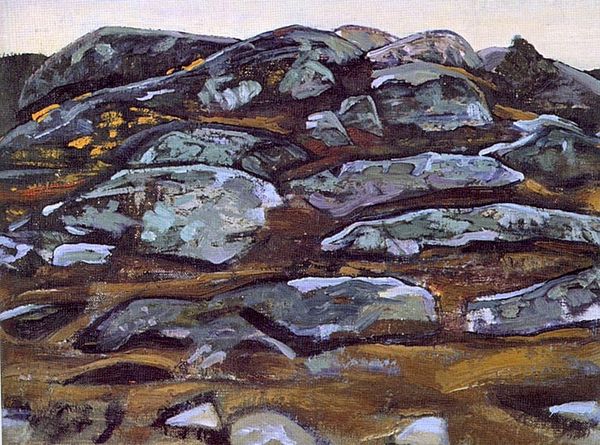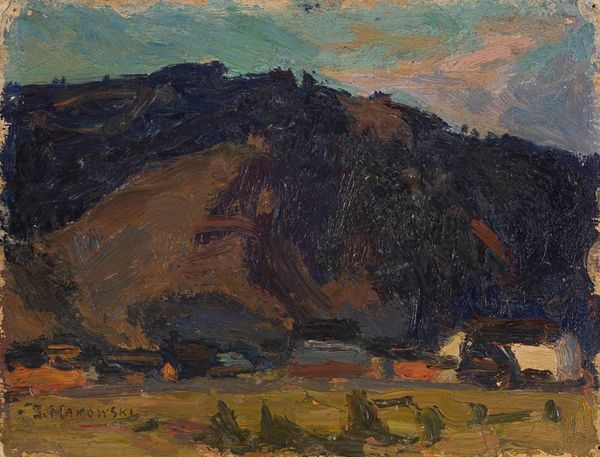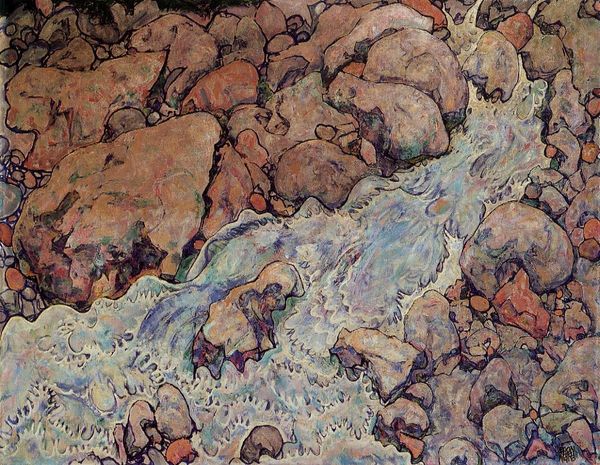
painting, plein-air, oil-paint
#
tree
#
painting
#
impressionism
#
plein-air
#
oil-paint
#
landscape
#
impressionist landscape
#
oil painting
#
rock
#
seascape
#
watercolor
Copyright: Public domain
Curator: Let’s explore Claude Monet's "Study of Rocks," painted in 1889. What strikes you upon seeing it? Editor: The immediate feeling is one of massiveness. The close-up perspective, coupled with the texture built from layered brushstrokes, really emphasizes the weight and density of the rocks. Curator: It’s a piece that begs us to consider the geological, the historical, almost to grapple with time itself. Monet painted it during a period of intense artistic innovation. What statement do you think this type of work, landscape, is making, especially considering Monet’s social milieu? Editor: I appreciate that interpretation, but, here, the composition seems primary to me. Note how the artist creates rhythm. The use of impasto isn’t just representational; it constructs its own reality, a tactile engagement divorced from specific social messaging. It has to do with optical sensation. Curator: I can appreciate that angle, too. But if we deny art’s potential to embody a kind of radicalism, are we doing our historical understanding of this work a disservice? Considering that this was completed only decades after the publication of *On the Origin of Species*— the relationship between humanity, temporality, and nature was palpably evolving, which feels unavoidable here. The placement of small shrubs gives the landscape depth but, to me, these placements act more explicitly as a marker of scale relative to other biotic factors. Editor: Fair enough, but in its aesthetic choices, there are no politics in the rocks, themselves. Curator: Well, yes, it is still largely an aesthetic engagement but I appreciate, more than that, the way the artist demands a negotiation with place. It is like land art, just on a smaller canvas. Editor: Perhaps a productive compromise. Regardless, “Study of Rocks” definitely forces an introspection about both perception and time. Curator: Agreed. Whether focusing on historical or compositional elements, there's no denying the way Monet uses landscape here to confront, perhaps even alter, our experience of it.
Comments
No comments
Be the first to comment and join the conversation on the ultimate creative platform.
